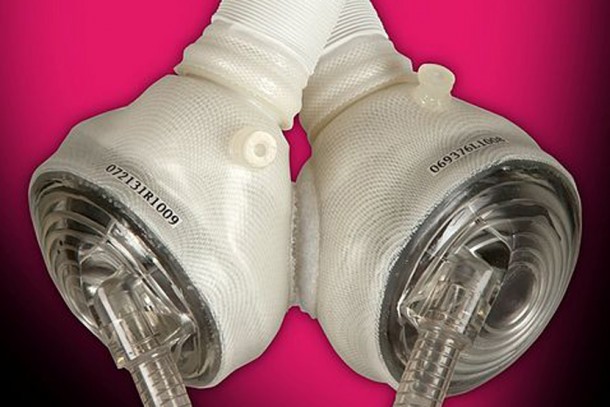U.S.A. In April of 1969, a young Dr. Denton A. Cooley forever changed the field of cardiac surgery. Haskell Karp, a 47-year old man with heart disease, was dying of heart failure and no transplants were available. Out of ideas, the world-renowned surgeon implanted an untested artificial heart device invented by his colleague, Dr. Liotta, into Mr. Karp. While risky, the heart went on to support the patient for 36 hours; the field of mechanical circulatory support (MCS) was born.
The impetus charged with spurring the development of the total artificial heart is attributed to both the growing cardiac donor shortage in our country and the advance in engineering within medicine. Since Dr. Cooley’s milestone surgery, the approach of MCS has changed from mimicking human anatomy and physiology to questioning the need of a pulse—a tenet once considered to be fundamental for the heart.
Currently, the SynCardia Total Artificial Heart is the only approved device for total heart replacement in the US. Evolving from the Jarvik 7 device, the Syncardia Total Artificial Heart consists of two artificial ventricles, each made of semi-rigid polyurethane housing with four flexible diaphragms separating the blood chamber from the air chamber. Each artificial ventricle has mounted mechanical valves located in its inflow and outflow ports, controlling the direction of blood flow. The device has gained tremendous success, allowing patients suffering from severe cardiac dysfunction to gain adequate pulsatile circulation of blood throughout the body.
Today’s total artificial hearts differ from the Liotta-Cooley artificial heart in a number of ways, the most significant being size. As the field of MCS has progressed, total artificial heart devices have become smaller and less bulky, removing patient height as a factor in determining transplantation candidacy while improving quality of life for all patients.
However, artificial hearts from the SynCardia line of pulsatile mechanical devices have their flaws. The current model has a 70-cc stroke volume, which is too large for adolescents and other small patients. Furthermore, mechanical wear and tear from continuous pulsatile activity is inevitable, given that the heart beats over 37 million times per year. As it stands, the current total artificial heart’s finite endurance hinders its candidacy as a long-term solution to the cardiac donor problem.
Given the mechanical issues associated with pulsatile total artificial heart devices, one promising idea is the continuous-flow approach popularized by the success of continuous flow ventricular assist devices (VADs). Unlike their older counterparts, second generation VADs circulate blood continuously by using an internal rotor that spins 8,000-10,000 rpm, replacing the hearts pulsatile mechanism. As a result, they are smaller, quieter, easier to implant, and last longer than older pulsatile pumps.
Currently, the Texas Heart Institute has made substantial progress in developing a continuous-flow total artificial heart that replaces the function of both sides of the failing heart for animal trials.
While progress in the field of total artificial hearts has yielded encouraging results, more work is needed in order to seriously consider these devices for long-term destination therapy. Major additional risks besides device failure include blood clots and infections at the exit site of percutaneous driveline. Despite these challenges, the need for robust MCS devices provides an exciting avenue for total artificial heart to continue developing as a realistic solution to the global cardiac donor shortage conundrum.

